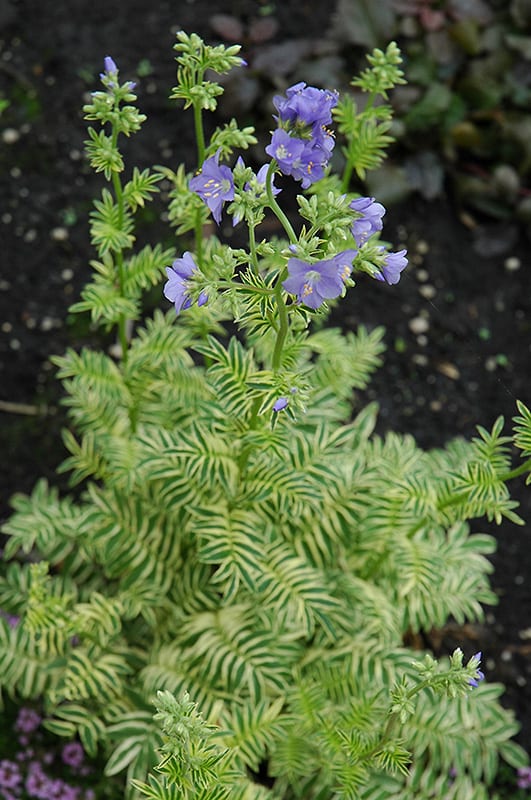Brise D’Anjou Jacob’s Ladder
Please contact your local store for product availability.
Find a garden center near you.
Species: caeruleum
Plant Height: 12 in.
Spread: 18 in.
Evergreen: No
Plant Form: over mound
Summer Foliage Color: green
Minimum Sunlight: partial shade
Maximum Sunlight: full sun
Brise D'Anjou Jacob's Ladder has masses of beautiful spikes of sky blue flowers rising above the foliage from mid spring to mid summer, which are most effective when planted in groupings. The flowers are excellent for cutting. Its attractive ferny pinnately compound leaves remain green in color with showy creamy white variegation throughout the season. The fruit is not ornamentally significant.
Brise D'Anjou Jacob's Ladder is an herbaceous perennial with tall flower stalks held atop a low mound of foliage. Its relatively fine texture sets it apart from other garden plants with less refined foliage. This is a relatively low maintenance plant, and is best cleaned up in early spring before it resumes active growth for the season. Deer don't particularly care for this plant and will usually leave it alone in favor of tastier treats. It has no significant negative characteristics. Brise D'Anjou Jacob's Ladder is recommended for the following landscape applications; Mass Planting General Garden Use
Brise D'Anjou Jacob's Ladder will grow to be about 12 inches tall at maturity extending to 24 inches tall with the flowers, with a spread of 18 inches. When grown in masses or used as a bedding plant, individual plants should be spaced approximately 15 inches apart. Its foliage tends to remain dense right to the ground, not requiring facer plants in front. It grows at a medium rate, and under ideal conditions can be expected to live for approximately 10 years. This plant does best in full sun to partial shade. It does best in average to evenly moist conditions, but will not tolerate standing water. It is not particular as to soil type or pH. It is somewhat tolerant of urban pollution. This is a selected variety of a species not originally from North America. It can be propagated by division; however, as a cultivated variety, be aware that it may be subject to certain restrictions or prohibitions on propagation.



